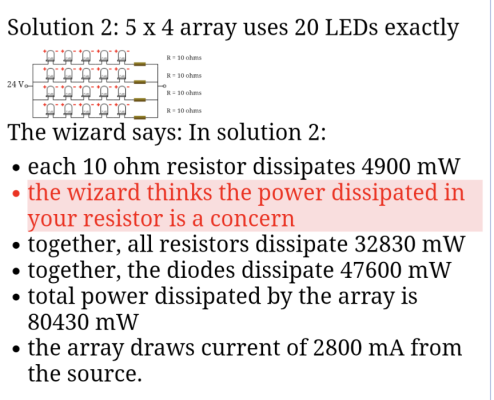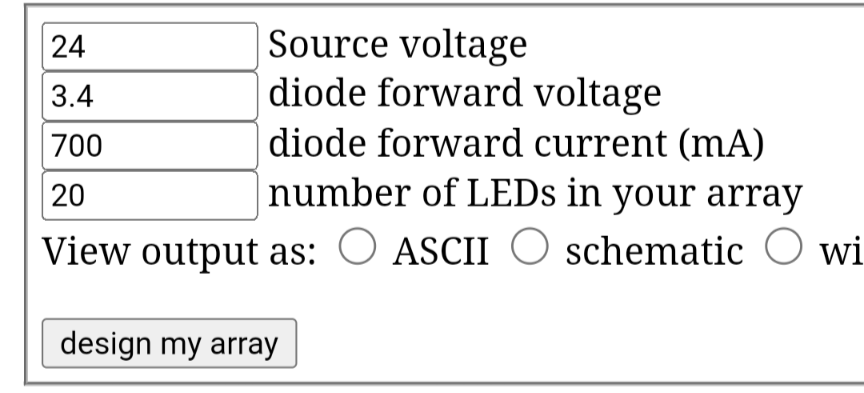Hello,
I am making a light with two led strips in a series. One UV and one all the other colors. I have a limitation in that I can only run 4 conductors up to the head of the light that has the LEDS and heat sink. Right now I have it wired so all four conductors are used by the 4 outputs of the LDD-700Ls. However I would like to add a fan to to the heat sink without having to add more conductors as the pipe I am using does not have room for more.
Is there a way to wire the LDD-700Ls such that each channel has independent dimming but uses a common (-) or something along those lines? Such that I can free up a wire to use as a (+) for a fan?
I should also add that the LDD-700Ls are not located on the light head. E.g. I want the drivers etc. to be separate from the light head. Hence why I didn't run the full output of the power supply with just 2 wires and then split it up at the head to multiple drivers. E.g. I want the drivers, the controller and dimming wires in a box separate from the light head. The only wires running to the light head are output wires from the drivers and hopefully a wire for a fan.
Thanks!
I am making a light with two led strips in a series. One UV and one all the other colors. I have a limitation in that I can only run 4 conductors up to the head of the light that has the LEDS and heat sink. Right now I have it wired so all four conductors are used by the 4 outputs of the LDD-700Ls. However I would like to add a fan to to the heat sink without having to add more conductors as the pipe I am using does not have room for more.
Is there a way to wire the LDD-700Ls such that each channel has independent dimming but uses a common (-) or something along those lines? Such that I can free up a wire to use as a (+) for a fan?
I should also add that the LDD-700Ls are not located on the light head. E.g. I want the drivers etc. to be separate from the light head. Hence why I didn't run the full output of the power supply with just 2 wires and then split it up at the head to multiple drivers. E.g. I want the drivers, the controller and dimming wires in a box separate from the light head. The only wires running to the light head are output wires from the drivers and hopefully a wire for a fan.
Thanks!
Last edited:






















